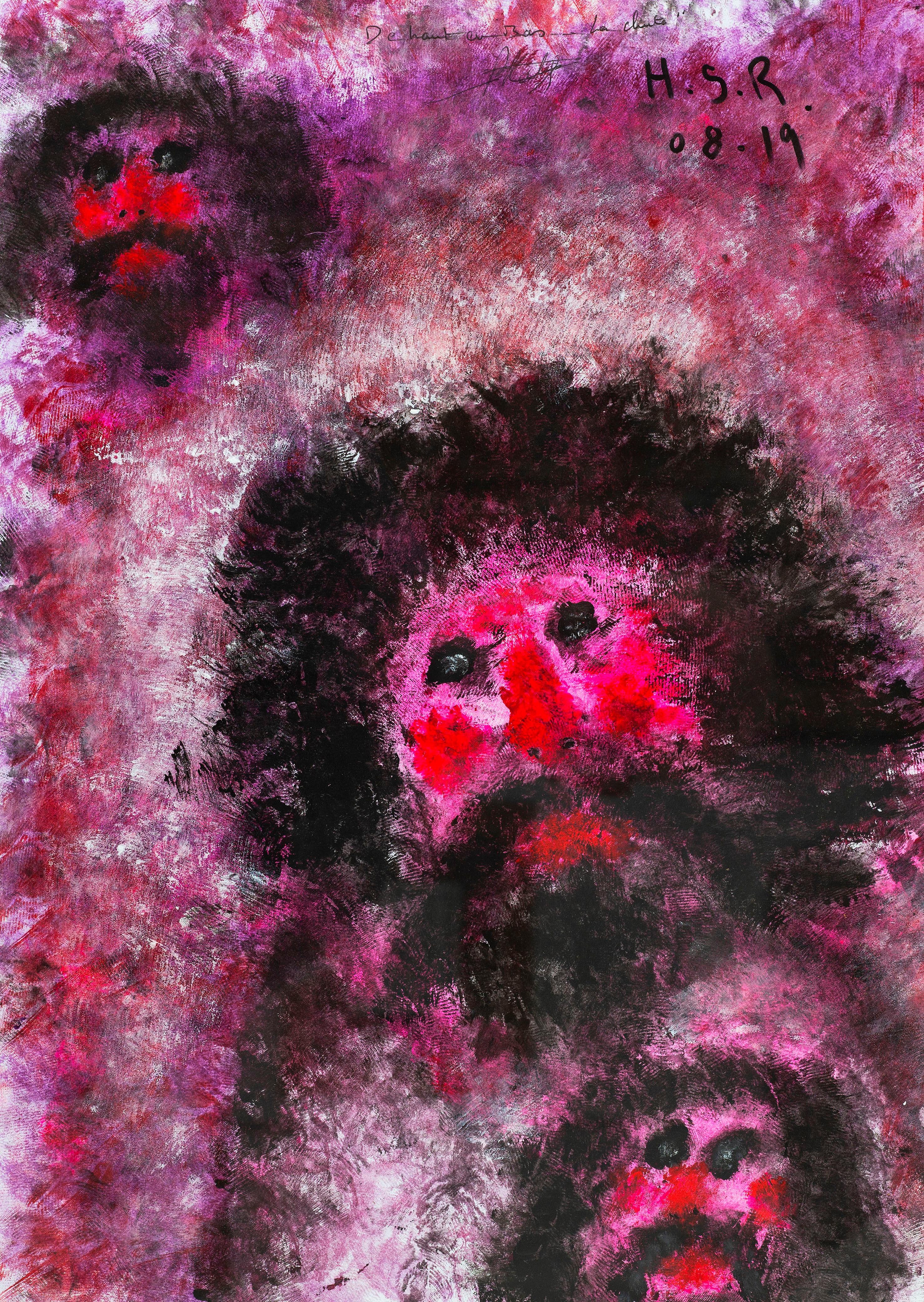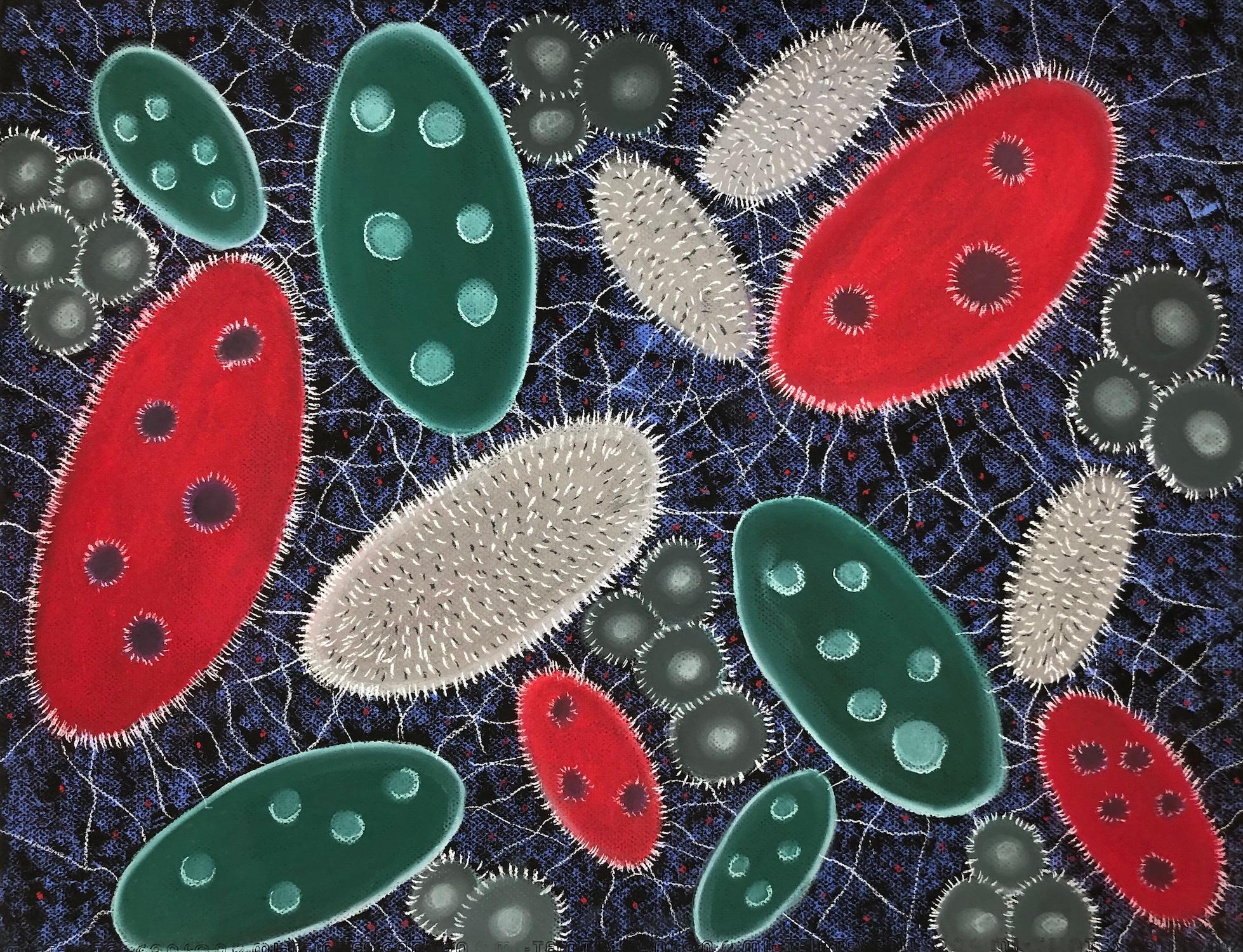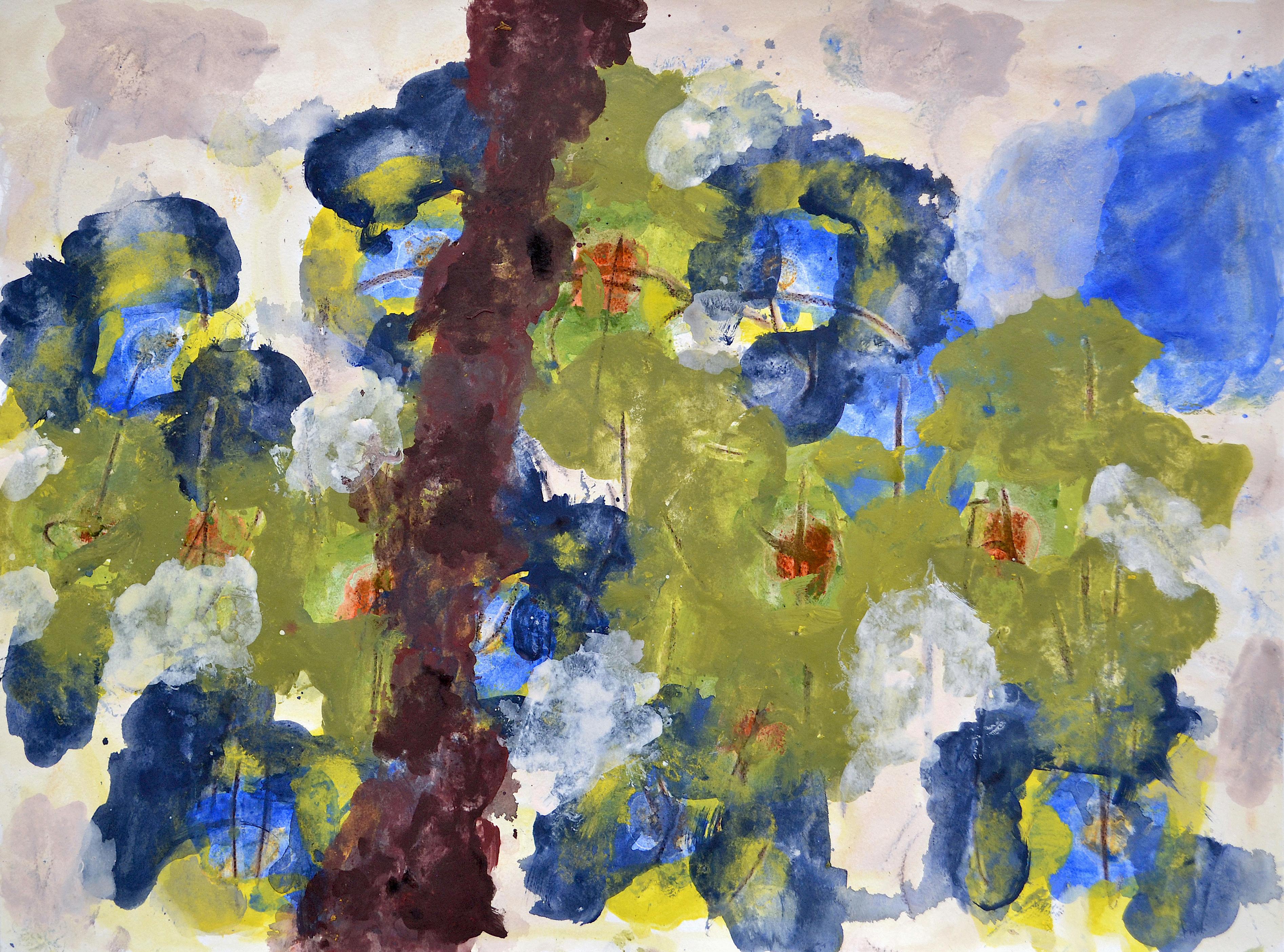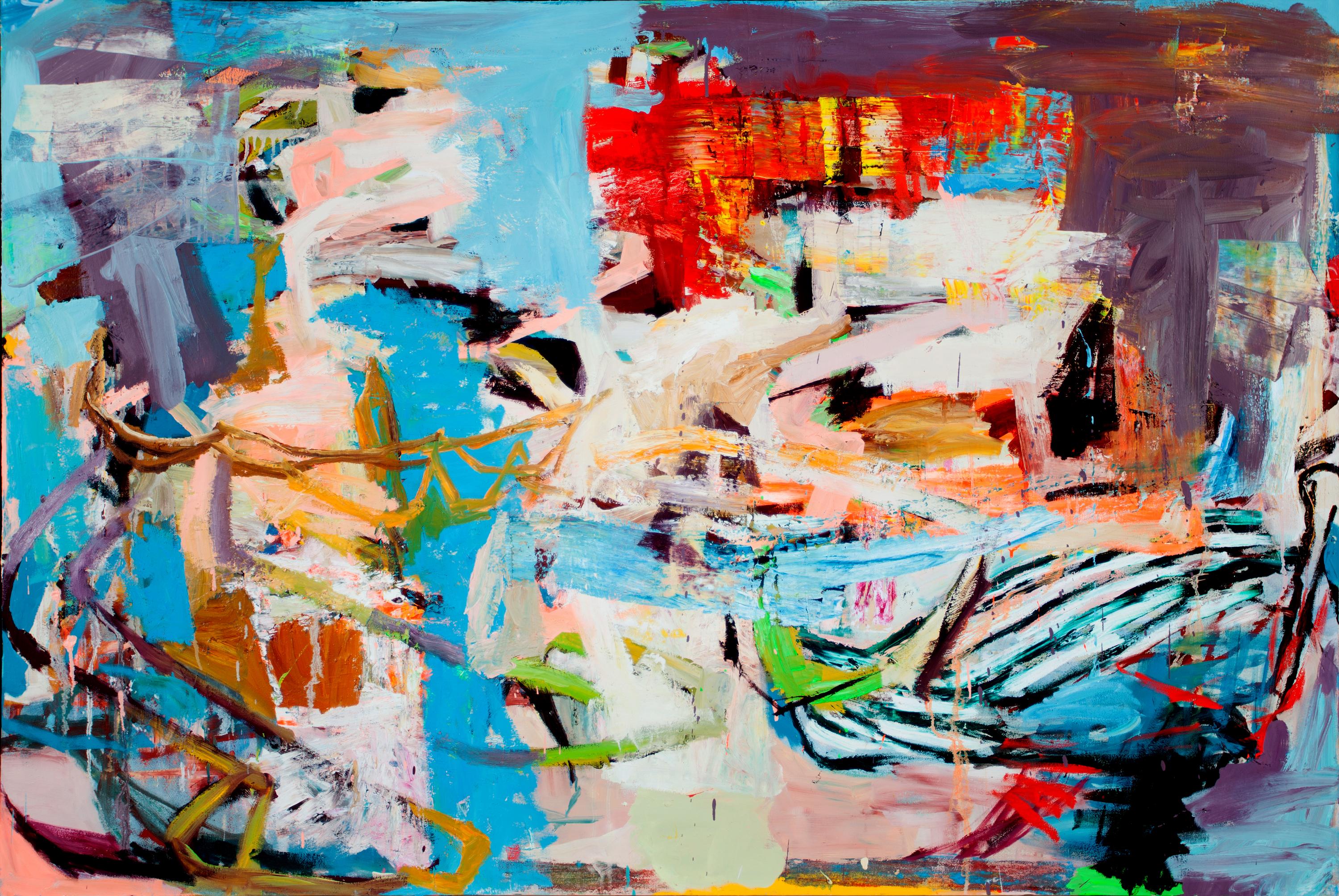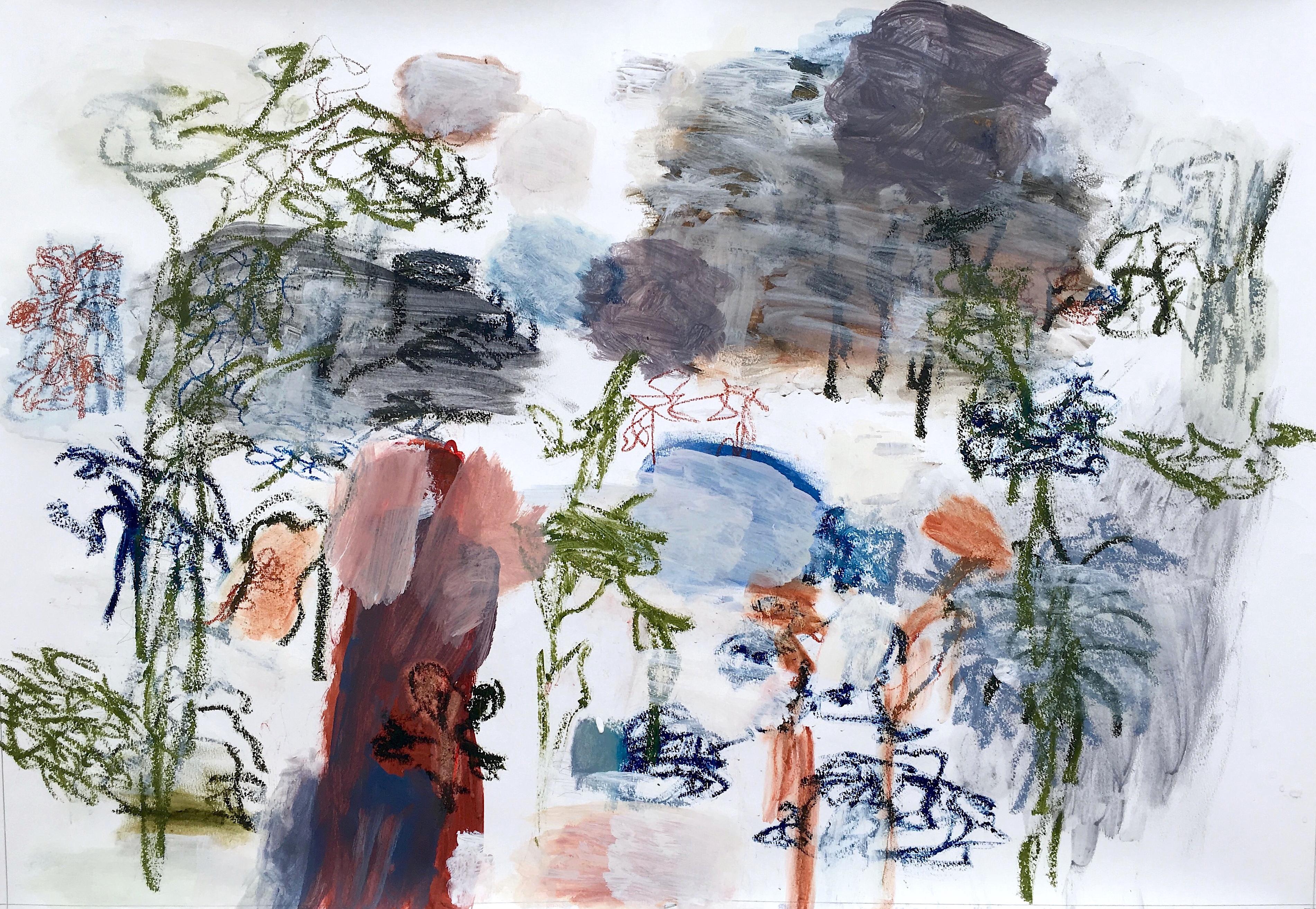Items Similar to "Untitled" Lyrical, Colorist, Abstract, Color Field Blue Pastel on Paper
Want more images or videos?
Request additional images or videos from the seller
1 of 8
Michael Goldberg"Untitled" Lyrical, Colorist, Abstract, Color Field Blue Pastel on Paper1969
1969
About the Item
Michael Goldberg
Untitled, 1969
Signed and dated lower right
Pastel on paper
8 x 8 inches
Born December 24, 1924, in New York City, Michael Goldberg continued to live and work in Manhattan. He began his artistic training at the Art Students League in New York (1938) and attended Hans Hofmann's School of Fine Art (1941-1942) before interrupting his studies to serve as a paratrooper in the United States Army in North Africa, China, Burma, and India. After World War II, he resumed his classes with Hofmann. He became involved in the avant-garde New York art scene, meeting Franz Kline, Willem de Kooning, Jackson Pollock, and Milton Resnick among others. In 1951, Goldberg, under the name Michael Stuart, showed his paintings in the "Ninth Street Show," arguably the first comprehensive display of Abstract Expressionist work. The following year he moved to 28 East 2nd Street and joined the artists' "Club" on Eighth Street, gathering with other Abstract Expressionist painters to exchange artistic ideas.
Around this time, he met the poet Frank O'Hara, who became a life-long friend and dedicated many poems to Goldberg. In addition, they collaborated on a project titled "Odes" in 1960. Goldberg maintained his connection with the Abstract Expressionist painters throughout the fifties and into the sixties. By 1953, he was a regular at Cedar Bar, known as a meeting place for avant-garde artists. Two years later, he moved into a studio next to that of De Kooning and Resnick. In 1962, he acquired Mark Rothko's studio at 222 Bowery where he worked until his death.
Teaching has played a central role in Goldberg's career. He has held visiting artist positions at the University of California, Berkeley (1961) and the University of Minnesota (1967) and has taught at the School of Visual Arts in New York City since 1979. Beginning in 1980, accompanied by his wife, the artist Lynn Umlauf, he has spent long summers in Italy. Many of his later pictures are inspired by Italy's celebrated artistic heritage.
Goldberg's work defies classification, having undergone numerous changes throughout his long and prolific career. He has painted dynamic, gestural canvases; monochromatic, minimalist works; grids; calligraphic images; patterned or striped paintings, and he has experimented with collage. By 2003, he had had 99 solo exhibitions since his first show at Tibor de Nagy in New York in 1953. His pictures are in numerous public collections in the United States, including the Albright-Knox Art Gallery, Buffalo, New York; the Art Institute of Chicago; the Hirshorn Museum and Sculpture Garden, Smithsonian Institution, Washington, D.C.; The Museum of Modern Art, New York; the Philadelphia Museum of Art; the Solomon R. Guggenheim Museum, New York; and the Whitney Museum of American Art, New York.
- Creator:Michael Goldberg (1924-2007, American)
- Creation Year:1969
- Dimensions:Height: 10 in (25.4 cm)Width: 10 in (25.4 cm)
- More Editions & Sizes:Unique workPrice: $3,250
- Medium:
- Movement & Style:
- Period:
- Condition:
- Gallery Location:New York, NY
- Reference Number:1stDibs: LU1841214463182
Michael Goldberg
Michael Goldberg, a second generation Abstract Expressionist painter known for his action-packed, gestural canvases, went through several phases that included monochromatic works of red and then black, bands of white on black, caligraphic images and bright bands of color hinting of architectural forms. Ever aligned with Abstract Expressionism which he described in 2001 as "still the primary visual challenge of our time", he later shrugged off the designation saying "labels come and go". (Glueck) He was also an art educator who taught at the University of California, Berkeley from 1961 to 1962; Yale University in 1967; and the University of Minnesota in 1968. He and his artist wife, Lynn Umlauf, both taught at the School of Visual Arts in New York city. Goldberg was born in 1924 in the Bronx of New York City. His studies at the Art Students League, 1938-1942, were interrupted by World War II where he served as a paratrooper in North Africa and Burma, making eighty jumps behind Japanese lines. Returning to New York, he studied with Jose de Creeft and Hans Hofmann, and Hoffman remained a strong influence. He was also influenced by Roberto Matta and Arshile Gorky, but it was Willem de Kooning, and his use of fiery brush-work and explosive color, who would prove to be Goldberg's greatest influence. Beginning 1980, he spent five months of each year in Tuscany, Italy on an estate near Siena. In his studio there, he created many of his signature paintings done with oil sticks pressed directly onto canvas. He described these as quasi grids, "patchy squares of color intersected at random by strong diagonals." (Glueck) Goldberg participated in the dealer Leo Castelli’s ground- breaking Ninth Street Show in 1951, which included works by Mitchell, Jackson Pollock, and Robert Motherwell; “he seemed to embody the attitudes shared by the artists of that group,” said Richard Kalina of Goldberg (“Michael Goldberg 1924–2007.” Art in America, March 2008). Two years later Goldberg received his first solo show at the Tibor de Nagy Gallery. In 1955, Goldberg befriended fellow Abstract Expressionist painter Norman Bluhm, which proved to be a fateful meeting. In 1956, Bluhm brought art collector Walter P. Chrysler, Jr. to Goldberg’s studio, and Chrysler purchased 17 of his paintings. With new interest in his work, Goldberg caught the eye of art dealer Martha Jackson and was soon represented by her gallery.
About the Seller
5.0
Platinum Seller
These expertly vetted sellers are 1stDibs' most experienced sellers and are rated highest by our customers.
Established in 2021
1stDibs seller since 2022
63 sales on 1stDibs
Typical response time: <1 hour
- ShippingRetrieving quote...Ships From: New York, NY
- Return PolicyA return for this item may be initiated within 3 days of delivery.
More From This SellerView All
- "Untitled" 1970s Color Field Pastel on Paper, Abstract Blue CompositionBy Michael GoldbergLocated in New York, NYMichael Goldberg Untitled, 1974 Signed and dated lower right Watercolor on paper 15 x 11 inches Born December 24, 1924, in New York City, Michael Goldberg continued to live and wor...Category
1970s Abstract Abstract Paintings
MaterialsPaper, Pastel
- "Erotic #1 (Cronus Sex)" Acrylic and Paper Collage on Linen Canvas AbstractBy David HareLocated in New York, NYDavid Hare Erotic #1 (Cronus Sex), 1970 Acrylic and paper collage on linen 68 x 51 inches “Freedom is what we want,” David Hare boldly stated in 1965, but then he added the caveat, ...Category
1970s Abstract Abstract Paintings
MaterialsLinen, Paper, Acrylic
- "Cronus Asleep in the Cave" Mixed Media Work on Paper by David HareBy David HareLocated in New York, NYDavid Hare Cronus Asleep in the Cave, 1971 Acrylic, ink wash, graphite, paper collage on paper on board 26 x 35 inches “Freedom is what we want,” David Hare boldly stated in 1965, b...Category
1970s Abstract Abstract Paintings
MaterialsAcrylic, Paper, Ink, Graphite
- "Cronus View from the Cave" Abstract Mixed Media Composition by David HareBy David HareLocated in New York, NYDavid Hare Cronus View from the Cave, 1971 Graphite, Ink wash, Paper Collage on Paper on Board 25 x 33 inches “Freedom is what we want,” David Hare boldly stated in 1965, but then he added the caveat, “and what we are most afraid of.” No one could accuse David Hare of possessing such fear. Blithely unconcerned with the critics’ judgments, Hare flitted through most of the major art developments of the mid-twentieth century in the United States. He changed mediums several times; just when his fame as a sculptor had reached its apogee about 1960, he switched over to painting. Yet he remained attached to surrealism long after it had fallen out of official favor. “I can’t change what I do in order to fit what would make me popular,” he said. “Not because of moral reasons, but just because I can’t do it; I’m not interested in it.” Hare was born in New York City in 1917; his family was both wealthy and familiar with the world of modern art. Meredith (1870-1932), his father, was a prominent corporate attorney. His mother, Elizabeth Sage Goodwin (1878-1948) was an art collector, a financial backer of the 1913 Armory Show, and a friend of artists such as Constantin Brancusi, Walt Kuhn, and Marcel Duchamp. In the 1920s, the entire family moved to Santa Fe, New Mexico and later to Colorado Springs, in the hope that the change in altitude and climate would help to heal Meredith’s tuberculosis. In Colorado Springs, Elizabeth founded the Fountain Valley School where David attended high school after his father died in 1932. In the western United States, Hare developed a fascination for kachina dolls and other aspects of Native American culture that would become a recurring source of inspiration in his career. After high school, Hare briefly attended Bard College (1936-37) in Annandale-on-Hudson. At a loss as to what to do next, he parlayed his mother’s contacts into opening a commercial photography studio and began dabbling in color photography, still a rarity at the time [Kodachrome was introduced in 1935]. At age 22, Hare had his first solo exhibition at Walker Gallery in New York City; his 30 color photographs included one of President Franklin Roosevelt. As a photographer, Hare experimented with an automatist technique called “heatage” (or “melted negatives”) in which he heated the negative in order to distort the image. Hare described them as “antagonisms of matter.” The final products were usually abstractions tending towards surrealism and similar to processes used by Man Ray, Raoul Ubac, and Wolfgang Paalen. In 1940, Hare moved to Roxbury, CT, where he fraternized with neighboring artists such as Alexander Calder and Arshile Gorky, as well as Yves Tanguy who was married to Hare’s cousin Kay Sage, and the art dealer Julian Levy. The same year, Hare received a commission from the American Museum of Natural History to document the Pueblo Indians. He traveled to Santa Fe and, for several months, he took portrait photographs of members of the Hopi, Navajo, and Zuni tribes that were published in book form in 1941. World War II turned Hare’s life upside down. He became a conduit in the exchange of artistic and intellectual ideas between U.S. artists and the surrealist émigrés fleeing Europe. In 1942, Hare befriended Andre Breton, the principal theorist of surrealism. When Breton wanted to publish a magazine to promote the movement in the United States, he could not serve as an editor because he was a foreign national. Instead, Breton selected Hare to edit the journal, entitled VVV [shorth for “Victory, Victory, Victory”], which ran for four issues (the second and third issues were printed as a single volume) from June 1942 to February 1944. Each edition of VVV focused on “poetry, plastic arts, anthropology, sociology, (and) psychology,” and was extensively illustrated by surrealist artists including Giorgio de Chirico, Roberto Matta, and Yves Tanguy; Max Ernst and Marcel Duchamp served as editorial advisors. At the suggestion of Jacqueline Lamba...Category
1970s Abstract Abstract Paintings
MaterialsPaper, Ink, Graphite
- "Alizarin Orionids" Abstract Watercolor, Work on Paper, Abstract formsBy Charles HinmanLocated in New York, NYCharles Hinman Alizarin Orionids, 2003 Signed and dated lower right Watercolor on paper 12 x 12 inches Throughout his long career, Charles Hinman has collapsed the divide between p...Category
Early 2000s Abstract Abstract Paintings
MaterialsPaper, Watercolor
- "Cronus Dining" David Hare, Yellow and White Composition on Paper, AbstractBy David HareLocated in New York, NYDavid Hare Cronus Dining, 1968 Graphite, acrylic, paper collage on board 44 x 34 inches “Freedom is what we want,” David Hare boldly stated in 1965, but then he added the caveat, “and what we are most afraid of.” No one could accuse David Hare of possessing such fear. Blithely unconcerned with the critics’ judgments, Hare flitted through most of the major art developments of the mid-twentieth century in the United States. He changed mediums several times; just when his fame as a sculptor had reached its apogee about 1960, he switched over to painting. Yet he remained attached to surrealism long after it had fallen out of official favor. “I can’t change what I do in order to fit what would make me popular,” he said. “Not because of moral reasons, but just because I can’t do it; I’m not interested in it.” Hare was born in New York City in 1917; his family was both wealthy and familiar with the world of modern art. Meredith (1870-1932), his father, was a prominent corporate attorney. His mother, Elizabeth Sage Goodwin (1878-1948) was an art collector, a financial backer of the 1913 Armory Show, and a friend of artists such as Constantin Brancusi, Walt Kuhn, and Marcel Duchamp. In the 1920s, the entire family moved to Santa Fe, New Mexico and later to Colorado Springs, in the hope that the change in altitude and climate would help to heal Meredith’s tuberculosis. In Colorado Springs, Elizabeth founded the Fountain Valley School where David attended high school after his father died in 1932. In the western United States, Hare developed a fascination for kachina dolls and other aspects of Native American culture that would become a recurring source of inspiration in his career. After high school, Hare briefly attended Bard College (1936-37) in Annandale-on-Hudson. At a loss as to what to do next, he parlayed his mother’s contacts into opening a commercial photography studio and began dabbling in color photography, still a rarity at the time [Kodachrome was introduced in 1935]. At age 22, Hare had his first solo exhibition at Walker Gallery in New York City; his 30 color photographs included one of President Franklin Roosevelt. As a photographer, Hare experimented with an automatist technique called “heatage” (or “melted negatives”) in which he heated the negative in order to distort the image. Hare described them as “antagonisms of matter.” The final products were usually abstractions tending towards surrealism and similar to processes used by Man Ray, Raoul Ubac, and Wolfgang Paalen. In 1940, Hare moved to Roxbury, CT, where he fraternized with neighboring artists such as Alexander Calder and Arshile Gorky, as well as Yves Tanguy who was married to Hare’s cousin Kay Sage, and the art dealer Julian Levy. The same year, Hare received a commission from the American Museum of Natural History to document the Pueblo Indians. He traveled to Santa Fe and, for several months, he took portrait photographs of members of the Hopi, Navajo, and Zuni tribes that were published in book form in 1941. World War II turned Hare’s life upside down. He became a conduit in the exchange of artistic and intellectual ideas between U.S. artists and the surrealist émigrés fleeing Europe. In 1942, Hare befriended Andre Breton, the principal theorist of surrealism. When Breton wanted to publish a magazine to promote the movement in the United States, he could not serve as an editor because he was a foreign national. Instead, Breton selected Hare to edit the journal, entitled VVV [shorth for “Victory, Victory, Victory”], which ran for four issues (the second and third issues were printed as a single volume) from June 1942 to February 1944. Each edition of VVV focused on “poetry, plastic arts, anthropology, sociology, (and) psychology,” and was extensively illustrated by surrealist artists including Giorgio de Chirico, Roberto Matta, and Yves Tanguy; Max Ernst and Marcel Duchamp served as editorial advisors. At the suggestion of Jacqueline Lamba...Category
1960s Abstract Abstract Paintings
MaterialsPaper, Acrylic, Graphite
You May Also Like
- The Drop - Abstract Pastel on Paper Yellow Orange White Brown RedBy Simon Richard HalimiLocated in Sofia, BG"The drop" is an abstract and figurative painting by the French artist Maestro Simon Richard Halimi. Through his art, he has a very sharp and unique style of bright and colorful expr...Category
2010s Abstract Expressionist Abstract Paintings
MaterialsPaper, Pastel
- I Love You, Also - Abstract Pastel on Paper Yellow Orange White Brown RedBy Simon Richard HalimiLocated in Sofia, BG"I love you, also" is an abstract and figurative painting by the French artist Maestro Simon Richard Halimi. Through his art, he has a very sharp and unique style of bright and color...Category
2010s Abstract Expressionist Abstract Paintings
MaterialsPaper, Pastel
- "Macroaction 13", microscopic, blue, red, green, grey, white, pastel, drawingBy Kay HartungLocated in Natick, MAKay Hartung’s “Macroaction 13” is a 19.5 x 25 inch pastel drawing done on black Canson Mi Teintes paper. In blues, red, green, grey and white this drawing is beautifully detailed wit...Category
Early 2000s Abstract Abstract Paintings
MaterialsPaper, Pastel
- Relational Inefficiency #36Located in Dallas, TXacrylic & pastel on paperCategory
2010s Abstract Abstract Paintings
MaterialsPaper, Acrylic, Pastel
- What Happened to the DuckLocated in Dallas, TXoil, neon paint, & pastel on paperCategory
2010s Abstract Figurative Paintings
MaterialsOil, Paper, Pastel
- Bishop Wrote With Dirty LinesLocated in Dallas, TXacrylic, charcoal, pencil, pastel, oil stickCategory
2010s Abstract Abstract Paintings
MaterialsPaper, Pastel, Charcoal, Oil, Pencil
Recently Viewed
View AllMore Ways To Browse
Michael Summers
Chinese New Year Vintage
Striped Paintings
Han Solo
Franz Mark
Buffalo Studios
Vintage Chicago Street Sign
Chicago Street Scene
Rothko Inspired
R Frank
C Knox
Fifties Sixties
Michael Jackson Signed
De Kooning Sculpture
Warring States Chinese
De Kooning Franz Kline
Grid Paper Vintage
Vintage Bar Chicago
